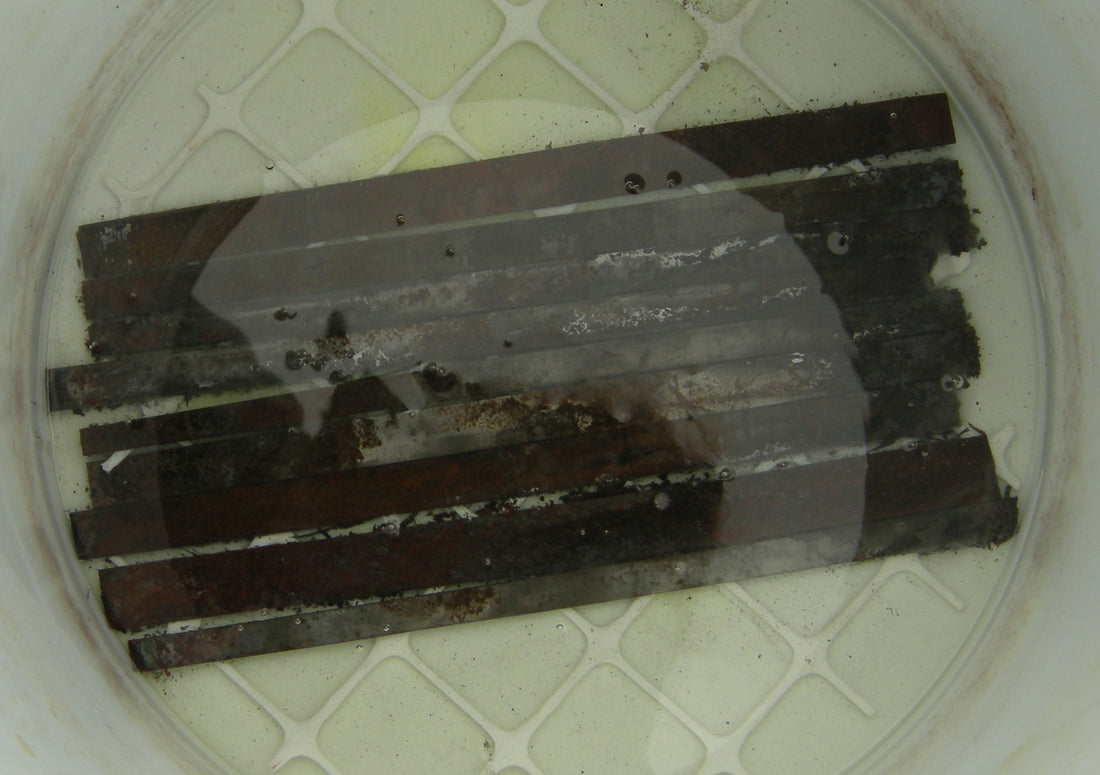
How to remove fire scale
Share
You will find the blanks are now covered in a hard layer of oxides known as fire scale. This layer is extremely hard and will dull your belts rather quickly if you grind through it. If you must grind it use a good ceramic belt like Norton Blaze. For that reason I recommend removing fire scale with hydrochloric acid (otherwise known as muriatic acid) diluted 1 part acid to 10 water (Add acid to water, never water to acid).
Wear a full face respirator for this with 3m-60923 acid/organic vapor cartridges or similar, chemical resistant gloves (warning: do not leave gloves exposed to sunlight or they may harden and crack) and apron. A disposable raincoat/pants would be a good recommendation for when handling the concentrated acid.
Do this OUTSIDE, as even the vapors from hydrochloric acid will rust nearby metal. store your hydrochloric acid and diluted mix in a secure container outside like a small lockable cabinet.
Keep a container full of baking soda mixed with water (50g baking soda per liter of water) nearby at all times in case of any accidental exposure to yourself or things you don't want corroded.
put the blade blanks carefully into the hydrochloric acid with pliers while wearing above safety equipment to avoid splashes and wait about 30 minutes. Exact time will depend on temperature and acid concentration. they should now be more or less free of oxides. Do not leave in excessively long as although the acid eats the steel much slower then the oxides it will still eat the steel eventually. they do not need to be 100% free of oxides, just most of the oxide gone to save your belts.

dip the blades into a water/baking soda mix, you will note some bubbles as the acid is neutralized.
I recommend then washing with simple green and water then drying.
Store the blanks coated in oil to prevent corrosion. The same method can be used to acid etch the steel to give it a frosted etched look. If using it for acid etching, removing all oils from the blade first is essential to an even etching.
Remaining acid can be reused many many times and then neutralized with baking soda and flushed down the drain if you are on city sewage.